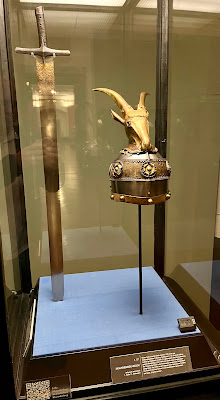My holiday reading was Roger Knight's, Convoys: The British Struggle Against Napoleonic Europe and America. My research for the HMS Ambuscade book flagged up the convoy system that gets marginal attention in the main histories. In practice, the convoy system was at the heart of British naval strategy. For most Royal Navy ships, convoy protection was their main role, defending the trade that provided the sinews of war and moving the troops to the continent and beyond.
Warship casualties on convoy duties were high. Between 1803 and 1815, 409 British warships were lost, 250 of which were wrecked or foundered. Bad weather was the main cause of these heavy losses, and the late-season Baltic convoys were the most dangerous. Convoys were organised by Admiralty clerks, who also arranged the warship protection, which was typically inadequate for the job. Both in numbers and the size of ships.
Convoys were not a new concept. The idea goes back to antiquity, but in this context, the Parliamentary navy used them to protect against Royalist privateers. Throughout these wars, privateers operated under a letter of marque, which provided the main threat. The difference in the Napoleonic Wars was the sheer scale of the operations. Convoys could consist of several hundred ships, often understaffed as the demands for crews multiplied. Sailing in a convoy was not popular with the masters of merchant ships because of the sailing discipline and the price advantage of getting goods to port first. However, it was effective and became an insurance requirement and a statutory duty for large parts of the conflict. The ships in the convoy were not always British. They would be protected if they departed or finished at a British port.
After explaining the convoy system and the ships that sailed in them, the author takes the reader through the convoy routes. Some of these are obvious, such as escorting troops and supplies to Wellington's army in Spain. Others, including the East and West Indies, provided the bullion and trade goods that paid for the war. Less well known is the importance of the Baltic, not just for the timber and hemp to build and maintain the Royal Navy ships but also for wheat. Privateers were also active along the British coast, intercepting goods like coal, which were typically moved by sea in the absence of good roads. Finally, the War of 1812 against the USA required huge convoys of troops and supplies to Canada and releasing hordes of American privateers against British ships in the West Indies and home waters.
British shipyards built 500 warships and 6,000 merchant ships during the war, plus prizes taken from enemy states. They were needed because French privateers captured 5,314 ships between 1803 and 1814. However, winter weather caused more casualties than enemy action. 61% of warship losses were due to the weather.
It is not an overstatement to say that without convoys, Britain could not have emerged victorious from the war. The significance of convoys in securing essential resources cannot be overstated. Bullion from Mexico, coffee and sugar from the tropics, and foodstuffs were crucial for financing the war and keeping the armies and population fed. Saltpetre from Bengal and sulphur from Sicily were vital for making the gunpowder that the army fought with. The importance of convoys was largely forgotten after the Napoleonic Wars, only to be reinstated in 1917 when U-Boat losses became unsustainable. In WW2, the convoy system played an equally crucial role in securing victory.
This is an excellent read, highlighting an aspect of the Napoleonic Wars that has largely been ignored.
 |
| Some of my Black Seas ships. |


















































